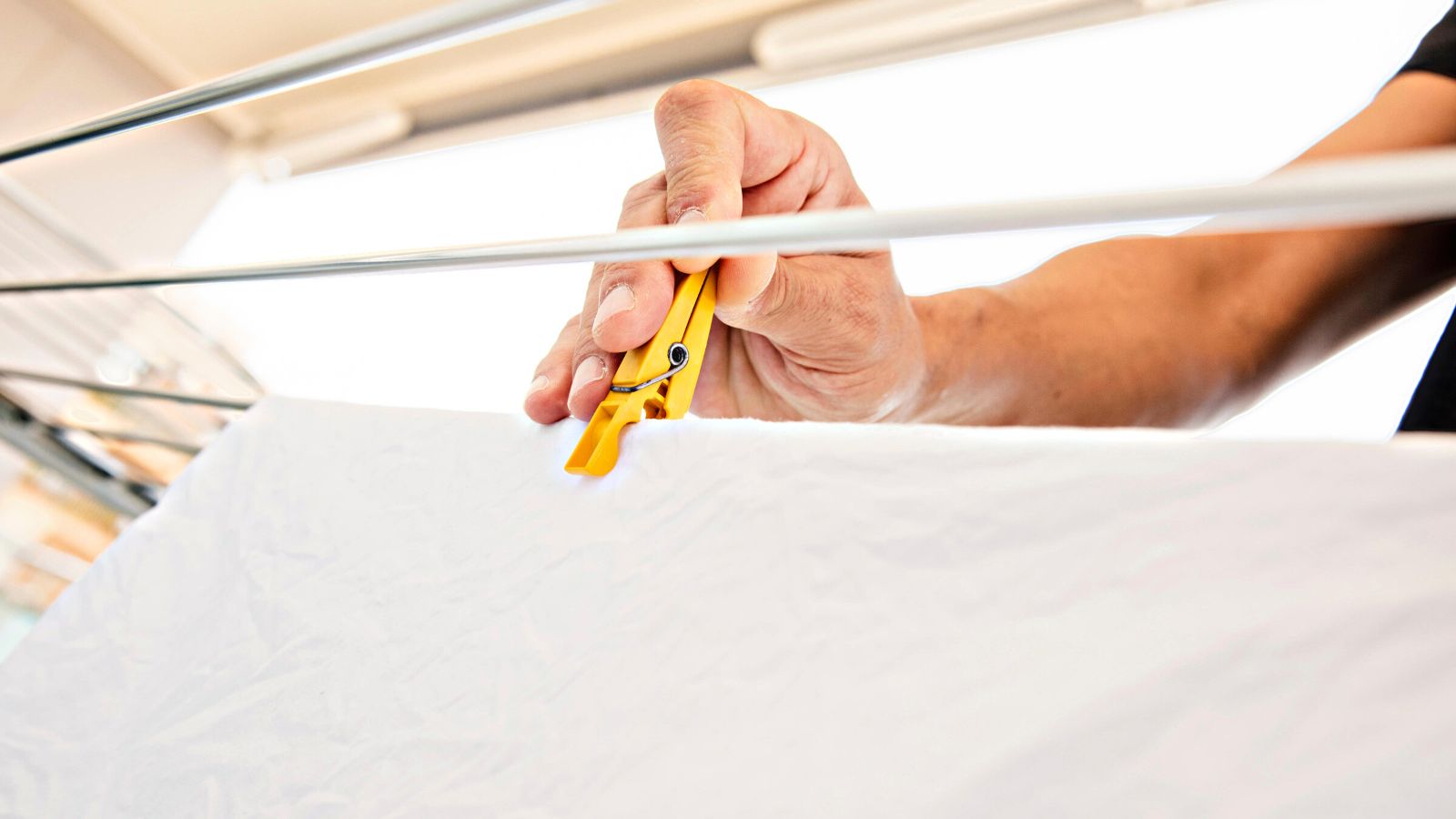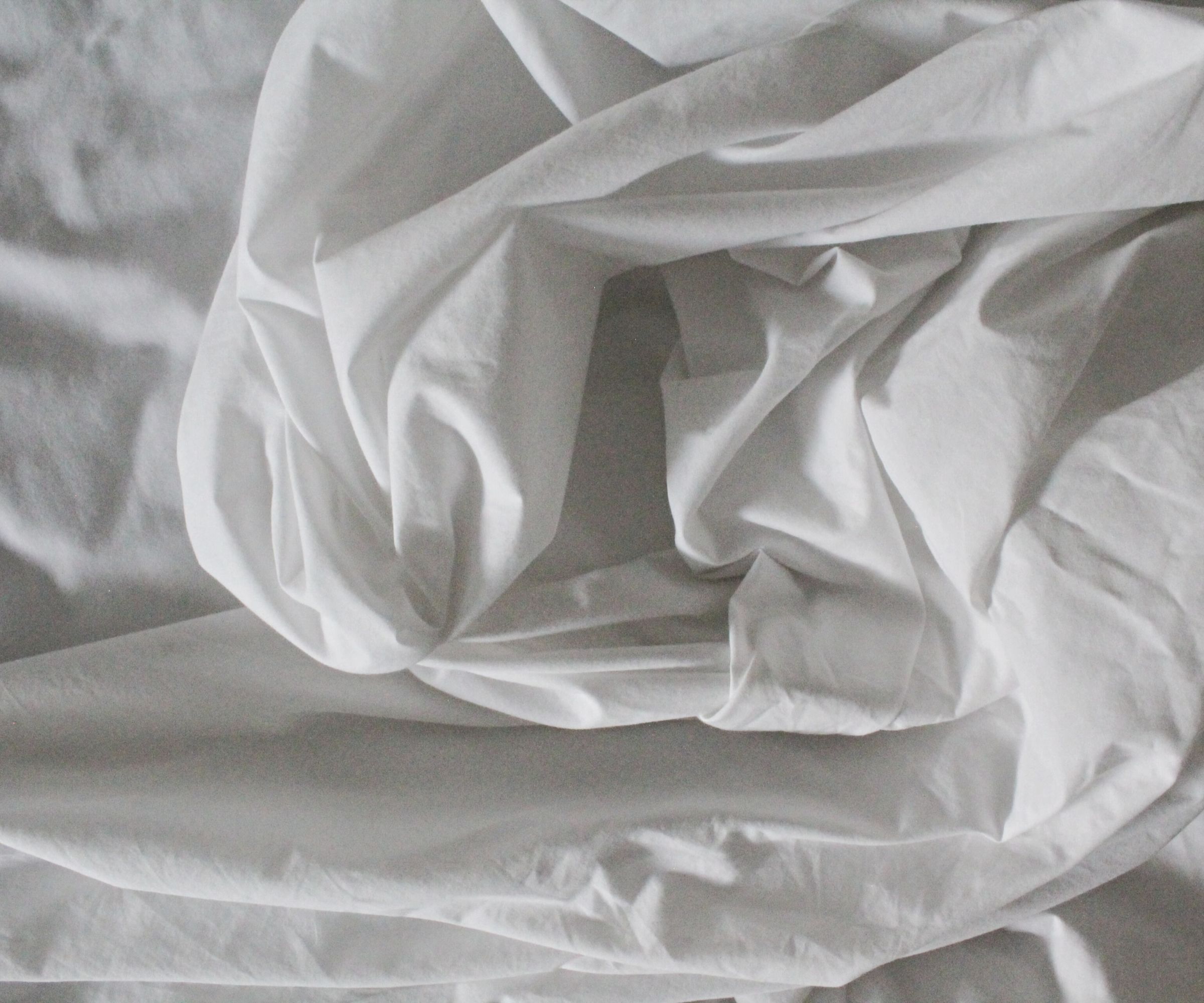This simple tip helped make my heated airer more efficient – and now my clothes dry in half the time
Heated airers are great additions to any laundry room, but they are far from quick. This hack has saved me time and money


Trying to get clothes to dry quickly without using my expensive tumble dryer can be a chore, especially now that the weather is cooling down where I live. A heated airer gets them dry, but it takes a long time so, when I discovered this internet tip to make a heated airer more efficient, I was kicking myself for not thinking of it before.
The simple tip involves placing a large bedsheet over the top of the airer and putting it near one of the best dehumidifiers to help speed up the drying process. The setup is easily one of the best changes I have made to my laundry room ideas yet.
Here, I go through why this tip works, and why I now prefer this setup over my tumble dryer.
The bedsheet tip

After struggling to get my heated airer to dry my clothes in under four hours, I turned to look for a cover to encase my airer and hold all the heat in. To say I was shocked at how difficult it was to find a cover for my exact size airer on a budget is an understatement. I had discovered the disadvantage to buying a larger heated airer like this one on Amazon after all.
I had heard of the regular bed sheet trick to dry clothes without a dryer or heated airer before, but I never thought to use it for my heated airer. A heated airer is just supposed to dry your clothes on its own, right? But I discovered that throwing a fitted bed sheet over the top of my filled airer and tucking it beneath the stand trapped all the heat inside and helped to recirculate it to my wet clothes. This not only helped to dry my clothes quicker but also made my airer more efficient – it is a great way to help save money at home.
What's more, given that my heated airer is designed to be covered with clothes, unlike my home's radiators, throwing a bed sheet over the top is far safer than tucking it around your home's heating system. This means I do not have to adjust my home's heating or the temperature of the appliance for the extra addition or rearrange my small laundry room ideas or small living room ideas to fit a standard airer beside my small radiators.
Given that it is cumbersome to try to dry bed sheets properly indoors anyway, this tip has also helped me find the perfect solution for drying my bedding after its weekly wash, too!
Why I use my airer over my tumble dryer
Like almost everybody else at the moment, I am always looking for how to cut energy bills. After working out how much it costs to run a tumble dryer, I was desperate to find alternatives to drying my clothes that would not cost me nearly $2 per cycle. Luckily I discovered the benefits of heated airers and I will never use my tumble dryer again.
Heated airers are ridiculously cheap in comparison to a tumble dryer, as well as being more environmentally friendly. As someone who is constantly on the lookout for ways to be sustainable at home, this was a big win for me.
One of the biggest advantages to leaving my dryer behind is that I no longer have to fret about decoding a tumble dryer temperature guide and working out what laundry symbols mean and whether I can or cannot throw an item in the machine. My fears of shrinking my favorite sweater or worse, setting my dryer on fire somehow, have finally been allayed.
Do heated airers use a lot of electricity?
As with any heated drying device, heated airers use electricity to help dry your clothes. Despite this, many heated airers use very little electricity in comparison to a traditional tumble dryer, making them more cost-effective and better for the environment than a traditional dryer.
Do heated clothes airers cause condensation?
Drying any damp clothes inside your house will contribute to the buildup of condensation. One of the main ways to combat this is to pair your heated airer with a dehumidifier to help prevent dampness or open a window near the airer if it is not too cold outside.
You should also always place your airer in a well-ventilated spot in your home such as in your bathroom or kitchen, spaces that are well suited for condensation, to prevent mold growth around your home.
Next, learn how to quickly dry bedding indoors during the winter.
Sign up to the Homes & Gardens newsletter
Design expertise in your inbox – from inspiring decorating ideas and beautiful celebrity homes to practical gardening advice and shopping round-ups.

Chiana has been at Homes & Gardens for two years and is our resident 'queen' of non-toxic living. She spends most of her time producing content for the Solved section of the website, helping readers get the most out of their homes through clever decluttering, cleaning, and tidying tips. She was named one of Fixr's top home improvement journalists in 2024.
-
 How to grow impatiens – garden experts reveal the secrets to growing this shade-tolerant, sparkling summer plant
How to grow impatiens – garden experts reveal the secrets to growing this shade-tolerant, sparkling summer plantBoth 'Busy Lizzie' and 'New Guinea' impatiens can thrive in shady yards
By Ellen Wells Published
-
 Charli XCX's dining room is a 'treasure-trove' of one-of-a-kind pieces – it's the most unique hosting space I've ever seen (and surprisingly replicable)
Charli XCX's dining room is a 'treasure-trove' of one-of-a-kind pieces – it's the most unique hosting space I've ever seen (and surprisingly replicable)The singer's Tudor-style dining room features eclectic furnishings, a mix of patterns and bright colors that all work together beautifully
By Hannah Ziegler Published